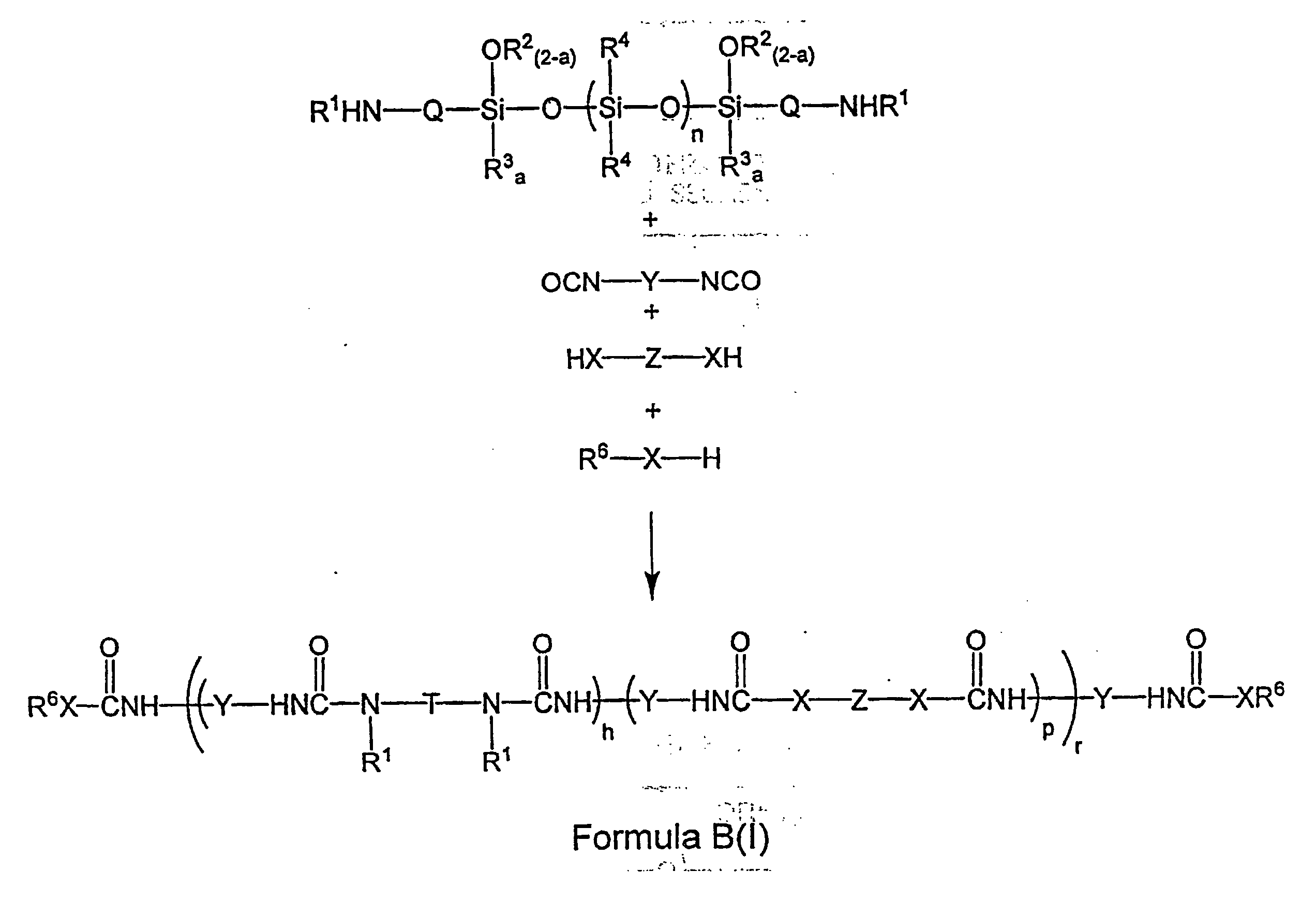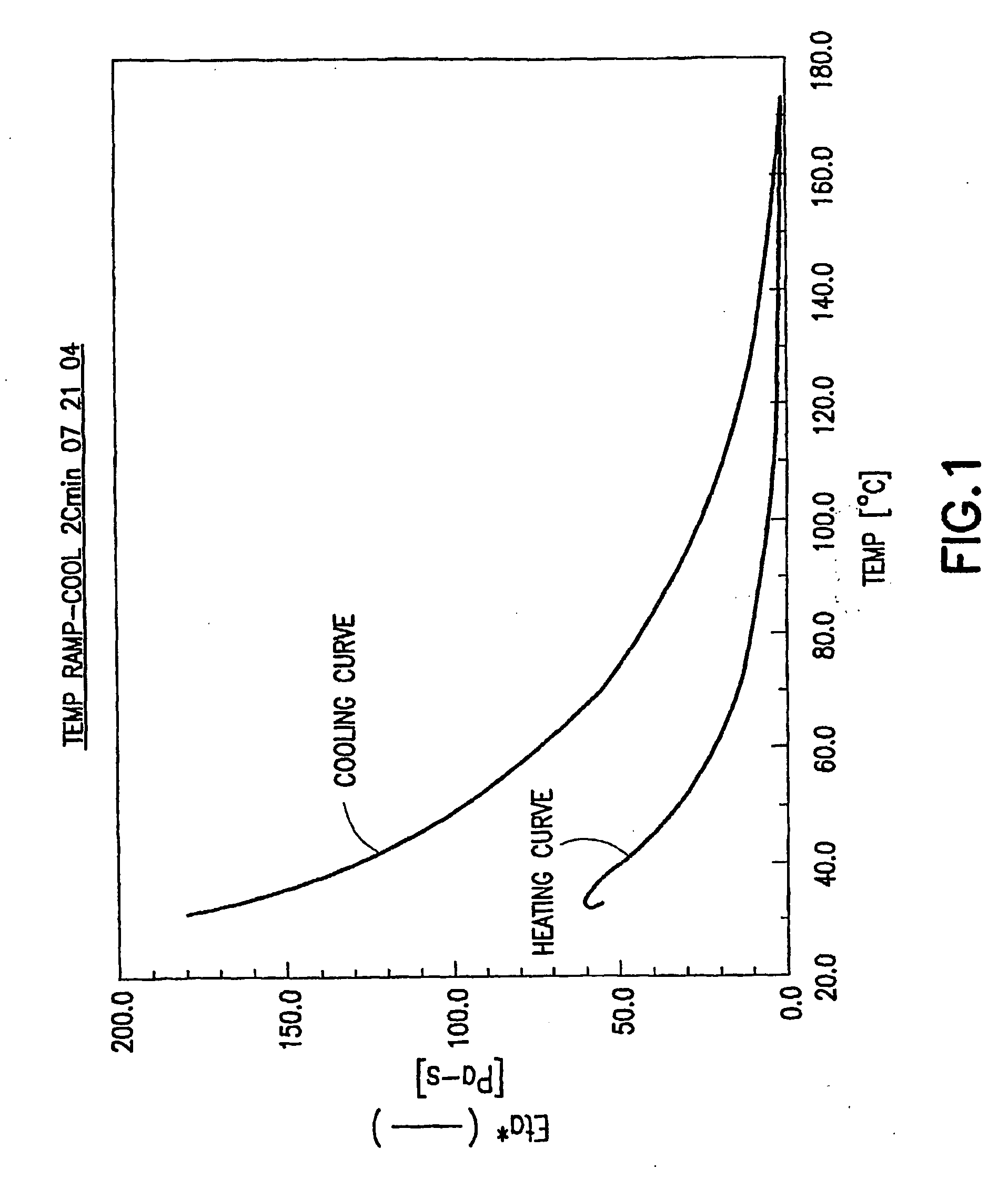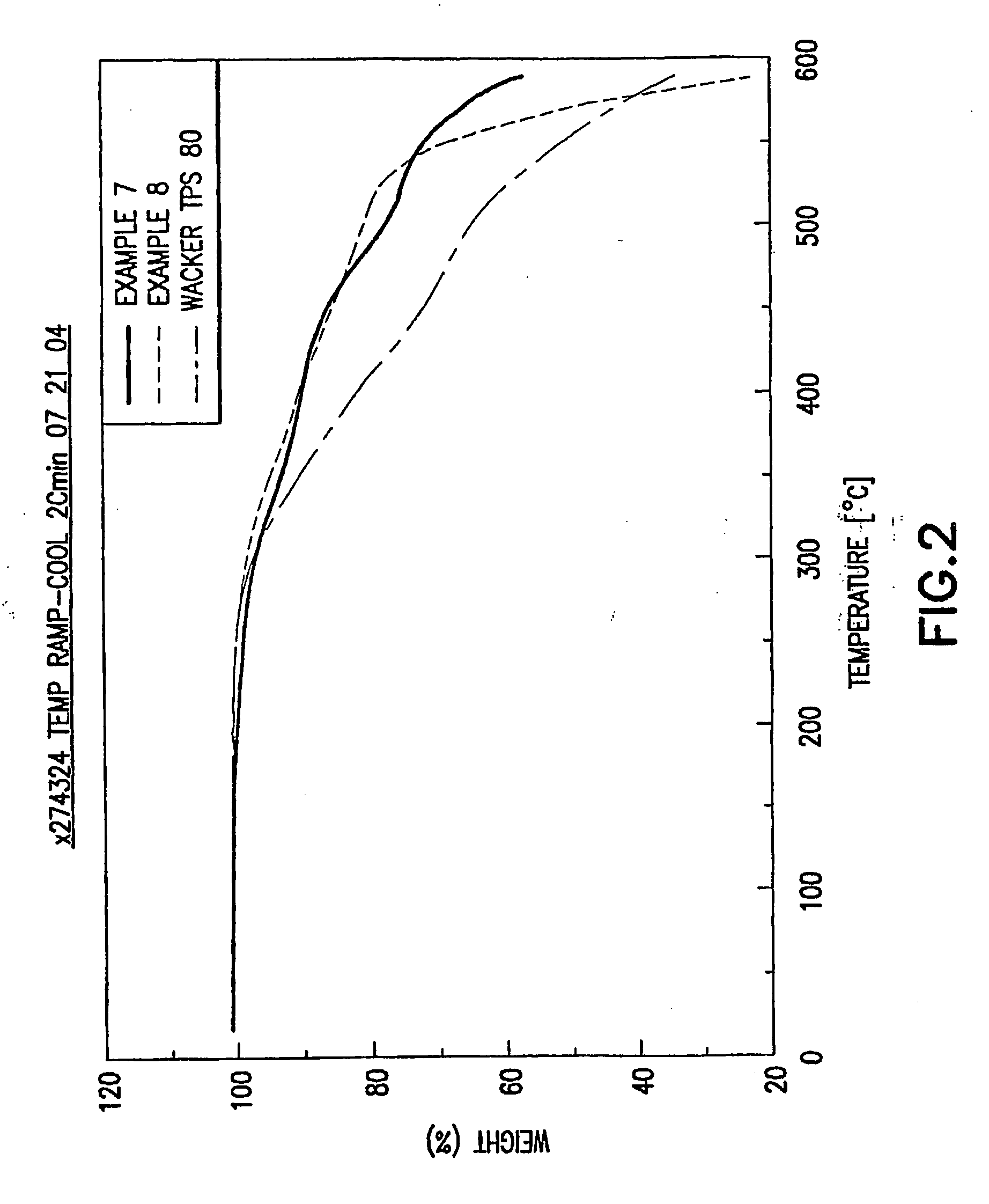Silicone-Containing Hot-Melt Compositions
a technology of hot melt and compositions, which is applied in the direction of liquid surface applicators, coatings, pretreatment surfaces, etc., can solve the problems of inability to change, the shape of the thermoplastic polymer set in an intended form may lose, and the difficulty of hot melt dispensing, so as to improve the control of the rheology of the composition
- Summary
- Abstract
- Description
- Claims
- Application Information
AI Technical Summary
Benefits of technology
Problems solved by technology
Method used
Image
Examples
examples
[0279]The following examples provide specific illustrations of various aspects of the present invention. In no way should the invention be construed as being limited to these particular examples.
Compositions of Formula A
Fluid A
Synthetic Example of Ethylaminoisobutyldimethoxy Terminated Polydimethylsiloxane
[0280]In a 5 liter three neck round bottom flask was charged with 2,004 g of a 100 cps hydroxyl terminated polydimethylsiloxane and 265.73 g of ethylaminoisobutyltrimethoxysilane (A-Link 15 from GE). The mixture was heated to 70° C. with stirring and vacuum stripping for 1 hour. Fluid A has an amine content of 0.537 mmoles / g
Fluid B
Synthetic Example of Aminopropyldimethoxy Terminated Polydimethylsiloxane
[0281]In a 2 liter three neck round bottom flask was charged with 1000.4 g of a 100 cps hydroxyl terminated polydimethylsiloxane and 90 g of aminopropyltrimethoxysilane. The mixture was heated to 70° C. with stirring and vacuum stripping for 1 hour. Fluid B has an amine content of 0....
example a1
[0283]In a 1 liter 3 neck round bottom flask was charged with a solution containing 167.80 g of Fluid A in 137.8 g of butyl acetate. A solution of 10 g of isophorone diisocyanate in 40 g of butylacetate was then slowly dropped into the round bottom flask with vigorous stirring over 10 minutes. The mixture gelled shortly after the complete addition of the diisocyanate. An additional 167.8 g of butylacetate then was further added. The mixture was further heated to 120° C. with stirring to redissolve the gel.
[0284]A film was cast from this solution via solvent evaporation. The film after standing in ambient environment for 7 days was fully cured and could not be redissolved by butylacetate.
example a2
[0285]In a 250 mL open beaker was placed with 104 g of Fluid A. Isophorone diisocyanate (5.77 g) was slowly added in fractions over 5 minutes with vigorous stirring. Mixture became warm to the touch and formed a viscous gel within minutes after complete addition of the diisocyanate. The reaction product was flowable after heating to 120° C. and was transferred into a tightly capped glass jar. The product is a hot melt that flowed upon heating but solidified upon cooling to room temperature.
[0286]A piece of film was cast from the molten liquid product. The film after standing overnight at ambient conditions was cured and did not flow upon further heating.
PUM
| Property | Measurement | Unit |
|---|---|---|
| molecular weight | aaaaa | aaaaa |
| temperature physical properties | aaaaa | aaaaa |
| hot melt | aaaaa | aaaaa |
Abstract
Description
Claims
Application Information
 Login to View More
Login to View More - R&D
- Intellectual Property
- Life Sciences
- Materials
- Tech Scout
- Unparalleled Data Quality
- Higher Quality Content
- 60% Fewer Hallucinations
Browse by: Latest US Patents, China's latest patents, Technical Efficacy Thesaurus, Application Domain, Technology Topic, Popular Technical Reports.
© 2025 PatSnap. All rights reserved.Legal|Privacy policy|Modern Slavery Act Transparency Statement|Sitemap|About US| Contact US: help@patsnap.com



